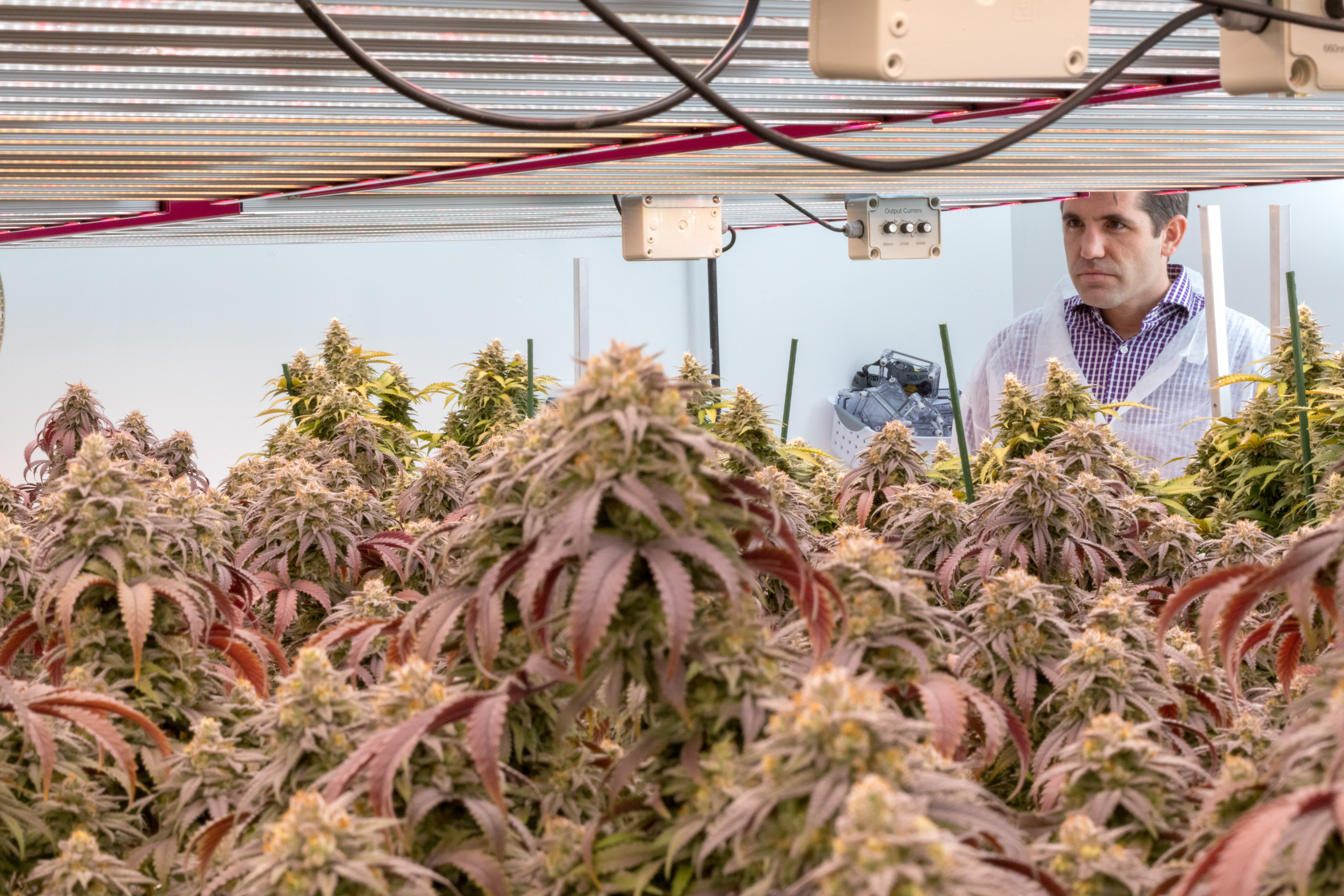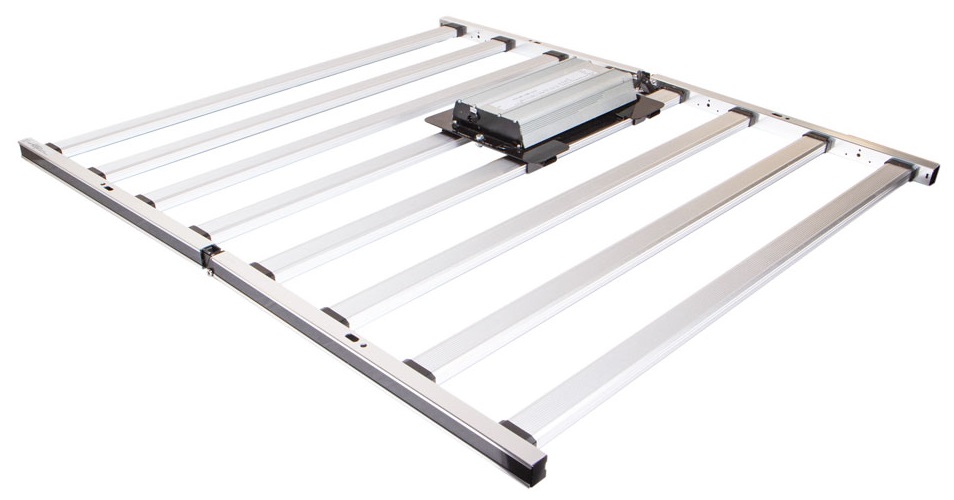In this interview, Growers Network had the opportunity to speak with Andrew Myers of ProGrowTech to talk about the evolution and benefits of LED technology.

Thanks for taking the time to talk with us. Can you tell us about your background, and what brought you to the cannabis industry?
Before finding my way to the cannabis industry, I spent fourteen years in the political sphere, working for former President Barack Obama and former Secretary of Homeland Security Janet Napolitano. During that time, I was one of the authors of the 2010 Arizona Medical Marijuana Act and served as campaign manager and chief spokesperson for Proposition 203, the successful effort to legalize medical marijuana in Arizona. I also co-founded the Arizona Medical Marijuana Association, an organization for licensed medical marijuana dispensaries, and served as Executive Director of the Arizona Dispensaries Association. I’m a big proponent of sustainable and smart development in the cannabis industry.
What is the biggest issue growers face when it comes to lighting?
Setting up a top-performing grow facility isn’t easy, but I would say the most common issue we hear about is uniformity. Either their plants aren’t getting enough light, their light is inconsistent or there’s too much intensity – and that’s not good either. I always encourage growers who are investigating lighting options to look at measurements like photosynthetically active radiation (PAR), photosynthetic photon flux (PPF) and photosynthetic photon flux density (PPFD). Even though a light might look great and seem bright to the human eye, you’ll want these solid measurements to really know how effective they are.
How has LED horticulture lighting evolved since the early days?
Early LED grow lights were not as efficient and more expensive. Bulky frames took up space and produced excessive heat that damaged plants and made it tough to regulate temperature effectively. Over the years, lighting manufacturers have refined every aspect of LEDs, including diodes, fixture design and spectral controls that were unheard of in the early days. Today’s LEDs can be adjusted to suit individual growers’ needs and all kinds of facility layouts.

LEDs have emerged as a clear leader when it comes to light quality, efficiency and design. Over time, they have also become much more affordable.
What improvements can growers expect when switching to LEDs from HPS or another lighting system?
LEDs replicate sunlight more closely than other lighting options, so plants naturally respond better to them. We’ve had growers report increased yields, enhanced THC concentrations and improved crop quality when switching to our LEDs from old-school LEDs, HPS or another lighting system. Growers also see improved HVAC efficiency, since LEDs run cooler than older lighting systems.
What technology should growers look for when purchasing grow lights?
Growers should look for lights with uniform light distribution to ensure their entire canopy receives the same amount of light. The efficiency rating (noted in micromoles per joule) is also essential, especially if the facility is limited in its electricity usage.
Growers should look for lights with vertical racking capabilities to maximize space. Hands down, this is the best way to increase yields within an existing facility.
It’s also important to look at the quality of the light spectrum your light provides. ProGrowTech’s Monarch line features the full spectrum of light, with an emphasis on far-red or infrared light, which has been shown to boost vegetative growth and reduce the time a plant needs to flower.

LEDs are on the more expensive end of the lighting market. What would you tell a grower who says they’re too expensive/not worth it?
The upfront cost of LEDs may seem expensive initially, but they lead to immediate energy savings that quickly accumulate. They also last longer than HPS lights and require less maintenance, which pays off big time in the long run.
Plus, we are rolling out a leasing program that’s designed for growers who don’t want to absorb that upfront cost. They can still reap all the benefits of LEDs while better managing cash flow. Either route, it’s a sizable win-win for the long-term.
Of the horticulture lighting innovations on the horizon, what are you most excited about?
LEDs are becoming increasingly easy to use and even more efficient. Advancements like smart controls can detect certain changes and respond automatically. Some LEDs have also incorporated wireless control, meaning growers can cut down on time physically adjusting their lights. Additionally, there’s been some recent research on different materials that can make LEDs even more efficient, such as self-replicating nanoparticles.
Cannabis growers can tap into some of the industry’s latest innovations with our new Monarch line. It marries top-tier LED technology and an affordable price tag, providing exactly what growers need to produce solid harvests.

As LED technology becomes more streamlined, LED grow lights have become more affordable for both commercial growers and home hobbyists. This is especially good news for the indoor food production industry, which is poised to increase access to produce in food deserts and reduce world hunger.
With the growth of vertical racking in commercial facilities, how has the lighting market evolved?
It’s amazing to see how grow lights have evolved with the explosion of vertical racking. From a design and manufacturing perspective, it’s exciting to see all the innovation occurring in the industry to maximize space while maintaining light quality and efficiency. More lighting manufacturers, ProGrowTech included, design lights with vertical racking capabilities, allowing growers to produce more without buying another facility or paying big money to expand their space.
What kind of crops/facility types make the most sense for LED grow lights?
LEDs have taken the cannabis industry by storm. Whether you’re growing marijuana or hemp, LEDs’ full-spectrum features and vertical racking capabilities will help you perfect each strain for maximum purity and crop yield.
Numerous other crops can be grown with LEDs, such as tomatoes, peppers, microgreens, lettuce and flowers. Our Monarch line is perfect for both home hobbyists and commercial operators looking to expand cubically and grow a variety of crops.
Growers Network would like to thank Andrew Myers and ProGrowTech for taking the time to discuss LEDs with us today. What do you think readers? Are you using LEDs? Thinking about it? Join our forum and start a conversation! Just click on of the "Join Now" buttons on this page.
10 Best Gift Ideas for Cannabis Connoisseurs and Growing Aficionados (2022)
December 7, 2022Developing and Optimizing a Cannabis Cultivation System
December 14, 2021Dealing with Insomnia: How Can CBD Help?
December 10, 2020Your Guide to Sleep and CBD
December 7, 2020
Do you want to receive the next Grower's Spotlight as soon as it's available? Sign up below!

Do you have any questions or comments?

About the Author
Andrew Myers is CEO of ProGrowTech, which helps commercial horticulture operations increase profitability, yield and energy efficiency with industry-leading LED lighting systems. For more information, visit progrowtech.com.